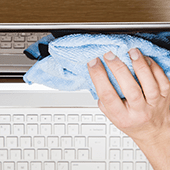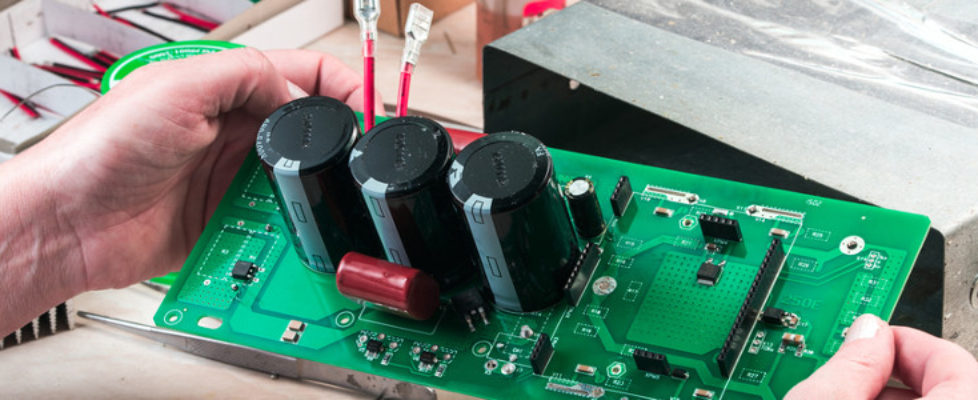Laptops are so convenient and hassle-free to use. It’s easy to forget that they need regular maintenance. One of the most common causes of laptop damage is overheating. Learn how to prevent your laptop from overheating, so you can boost its speed and prolong its life.
Causes of overheating
Laptops create heat during their normal operation. That’s why they’re designed with internal fans that blow out hot air and suck in cooler air. When your laptop keeps shutting down or suffers serious slowdowns, chances are it’s overheating.
One of the most common causes of overheating is when the fan doesn’t operate normally. This may be due to dust and grime clogging up the fan, preventing it from rotating properly. It’s also possible that the air vents are being blocked, preventing air from flowing into the laptop.
Another thing to consider is the age of your laptop’s battery, which relies on lithium to store electricity. This chemical naturally decays over time, no matter how carefully you use it. The older the battery, the less efficient it is and the more heat it generates.
Software use can also contribute to overheating. Too many apps and programs running in the background can overwork your laptop.
What to do if it’s overheating
The first thing you should do is check your hardware. Turn your laptop off and inspect the vents and your fan for any dirt, grime, or other possible causes of blockage. Also check whether the fan itself is not physically dented, which can slow down its rotation.
Sometimes overheating is simply caused by bad habits. Do you use your laptops in bed or on the carpet? Do you use pillows as padding? Uneven or soft surfaces often block the air vents, leading to overheating. Always place your laptop on a hard, even surface.
Aside from the hardware, check your software. Are there a lot of apps and programs that start automatically when you switch on your laptop? If yes, then you may need to limit them.
Keeping it cool
To prevent your laptop from overheating, always make sure that there’s adequate airflow for your laptop. Better yet, invest in a cooling pad. These pads lift your laptop and add more fans to facilitate better airflow.
Limit the number of programs that run when you start your laptop. Change your settings to “power save.” And shut down your laptop whenever you’re not using it.
It’s easy to take laptops for granted because they’re billed as plug-and-play devices. However, with a little extra care and attention, your devices will last much longer. If you want to prolong the lifetime of your IT hardware, call our experts today.

 The new year doesn’t have to mean new IT hardware problems. Sure, some headaches are unavoidable, but you can start the year right by giving your computer hardware a little TLC. Let our handy hardware checklist be your guide.
The new year doesn’t have to mean new IT hardware problems. Sure, some headaches are unavoidable, but you can start the year right by giving your computer hardware a little TLC. Let our handy hardware checklist be your guide. In today’s competitive business environment, SMBs are constantly finding new ways to outdo one another. Recently, social media and content marketing strategies have become increasingly popular. But because many of your competitors are utilizing the same platforms as you are, it’s essential for you to find new methods to make your business stand out. These tips might help:
In today’s competitive business environment, SMBs are constantly finding new ways to outdo one another. Recently, social media and content marketing strategies have become increasingly popular. But because many of your competitors are utilizing the same platforms as you are, it’s essential for you to find new methods to make your business stand out. These tips might help: Keeping your laptop plugged in all the time doesn’t solve your battery problems. It may keep your laptop fully charged for a day, but this practice may do more harm than good in the long run. Luckily, there are quick-and-easy fixes and long-term solutions to help save battery power on your laptop. Here’s a look at some of them.
Keeping your laptop plugged in all the time doesn’t solve your battery problems. It may keep your laptop fully charged for a day, but this practice may do more harm than good in the long run. Luckily, there are quick-and-easy fixes and long-term solutions to help save battery power on your laptop. Here’s a look at some of them.
 Unlike getting a new pair of sweatpants, the process of buying new hardware isn’t as straightforward. Because there are so many choices out there, it’s hard to go with what your friend has to say or which ones are selling at 50% off. If you want hardware that doesn’t only fit but also compliments your computer, go through these five things every buyer should consider if new hardware is on the top of your shopping list.
Unlike getting a new pair of sweatpants, the process of buying new hardware isn’t as straightforward. Because there are so many choices out there, it’s hard to go with what your friend has to say or which ones are selling at 50% off. If you want hardware that doesn’t only fit but also compliments your computer, go through these five things every buyer should consider if new hardware is on the top of your shopping list. When it comes to monitoring your employees online, there are potential positives and negatives for your company. But as a business owner who’s never done it before, you may be clueless as to what these are. So to help, we’ve come up with a list of the pros and cons of employee monitoring. And if you do decide to go through with it, we’ve provided some tips for a smooth implementation process.
When it comes to monitoring your employees online, there are potential positives and negatives for your company. But as a business owner who’s never done it before, you may be clueless as to what these are. So to help, we’ve come up with a list of the pros and cons of employee monitoring. And if you do decide to go through with it, we’ve provided some tips for a smooth implementation process. When listing your company’s assets, your blog probably doesn’t make the cut. Many businesses tend to ignore blogging – which is a real mistake these days. By putting time and resources into your blog, your can transform it from just another webpage to one of the most valuable things to your company’s growth. We’ve complied our own list of things you can do to make that happen.
When listing your company’s assets, your blog probably doesn’t make the cut. Many businesses tend to ignore blogging – which is a real mistake these days. By putting time and resources into your blog, your can transform it from just another webpage to one of the most valuable things to your company’s growth. We’ve complied our own list of things you can do to make that happen.